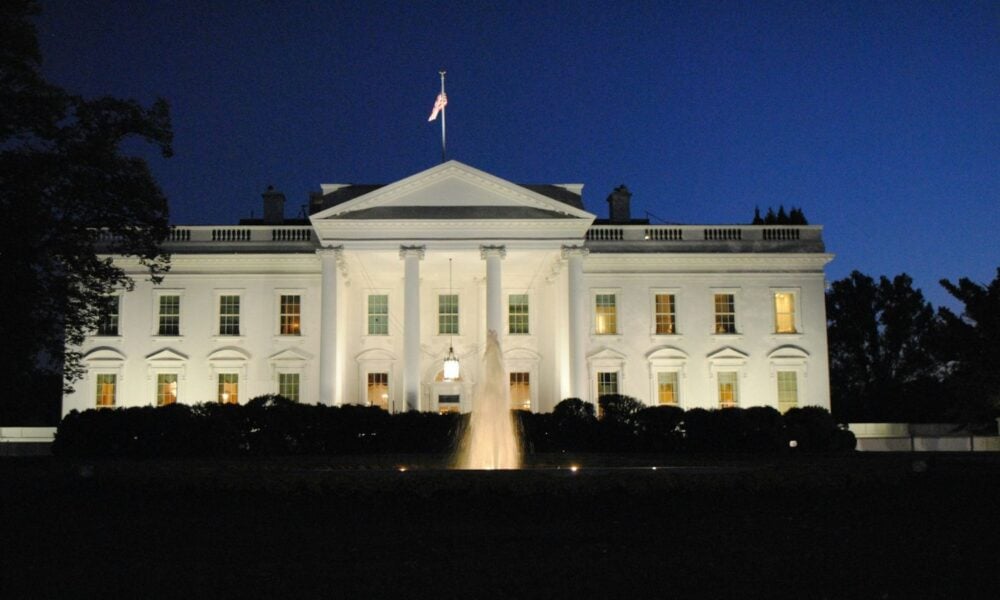Since the inception of the environmental justice (EJ) movement, EJ leaders have called for accountability by the federal government for meeting the needs of communities that for generations have been systematically excluded, environmentally overburdened, and starved of much needed and deserved resources.
The federal government has responded in many ways over the ensuing decades, from the Government Accountability Office’s (GAO) original 1983 study on the siting of hazardous waste facilities, to President Clinton’s 1994 executive order 12898 on environmental justice, to then-Environmental Protection Agency (EPA) administrator Lisa Jackson’s ambitious Plan EJ 2014 strategic plan.
While valiantly cultivating the bureaucratic soil, none of these efforts offered the promise of holding government accountable when making one of the most fundamental decisions of governance—the distribution of benefits.
President Biden’s Justice40 Initiative, born in 2021 via executive order 14008, is the first meaningful attempt in decades to get at that basic function of government and prioritize the needs of communities that have been left behind for far too long.
The Justice40 Initiative’s goal is for 40% of the overall benefits of certain federal investments to flow to disadvantaged communities that have been historically marginalized and overburdened. Taken together with other important equity and justice mandates, such as those included in additional executive orders dedicated to environmental justice and racial equity, we now are seeing the most comprehensive set of presidential equity and justice actions since the 1960s.
Yet more needs to be done to ensure the bold commitments of the past three years take root and grow into the systemic and structural changes our country and its most oppressed communities deserve. Because of the clarity of its goal and sharp focus on where and to whom benefits should flow during a time of historic government investment, the success of Justice40 will in many ways be the measuring stick of the Biden administration’s equity and justice efforts.
A recent Government Accountability Office report made a series of recommendations to strengthen Justice40 implementation, including five recommendations to each of the different White House units (aka Executive Office of the President, or EOP) that are leading Justice40 implementation. Those units are the Council on Environmental Quality (CEQ), the Office of Management and Budget (OMB), and the Climate Policy Office (CPO). The reason GAO’s recommendations matter is that agencies and the White House need to respond formally to their recommendations, while those of us in the public and nonprofit sector are easier to ignore.
I am a former EPA official who worked in the agency’s Office of Environmental Justice and External Civil Rights and have over 20 years of experience in equity-centered public service. I have some insights and I also encourage readers to delve into the expert insights and recommendations from the White House Environmental Justice Advisory Council (WHEJAC), which are rich and valuable.
Here’s what I think about the GAO’s report about Justice40:
What the GAO report on Justice40 got right
Having a clear whole-of-government focus on Justice40 has been a crucial catalyst for action.
GAO pointed this out in findings from its interviews with federal and nonfederal officials, saying “some respondents (7 of 18) wrote that the interim guidance was useful for developing implementation plans because it established clear deadlines for taking action. For example, one respondent stated that the ‘aggressive’ deadlines set in the interim guidance made implementing the Justice40 Initiative the program’s main priority.” (p. 33)
Indeed, in a few short years, the focus on Justice40 has resulted in the creation of numerous new programs across many agencies to improve community engagement and advance environmental justice. This has been accompanied by a significant increase in related levels of staff commitment and expertise, such as new EJ offices at the Department of Health and Human Services (HHS) and the Department of Justice (DOJ). The US Department of Energy (DOE) opened its doors to the Office of Energy Justice and Equity and set up numerous programs funded through the Infrastructure Investment and Jobs Act (IIJA) and Inflation Reduction Act (IRA) to expand community engagement.
Each institutional change gave agencies like EPA, where the first Office of Environmental Justice was opened in 1992, more and stronger collaborators across the federal family to work alongside. Thanks to the historic support for EJ and personal commitment of EPA Administrator Michael Regan, EPA significantly increased the heft of its EJ program by aligning with its external civil rights program and reorganizing to create a national program (a big step up from the previous solo office) with a senate-confirmed Assistant Administrator position to head the new Office of EJ and External Civil Rights.
GAO also shared important recommendations around improving transparency and accountability, including through better use of its scorecard, in order to allow Congress and the public to hold the executive branch accountable for upholding Justice40. See, p. 52 and p. 43 of the report.
Very importantly, the Equitable and Just National Climate Forum (EJNCF) has noted concerns about including racial demographic data to improve the scorecard’s efficacy, saying “As it currently stands, the information provided in the Phase One Scorecard does not include any racial demographic data that would allow verification of the extent to which agencies have ensured racial equity in their work.” EJNCF has also provided recommendations in response to the one-year anniversary of the EJ executive order 14096 on April 21, 2024.
What I wish the GAO had also said
I wish the GAO had also said this in its recommendations:
Fix #1: Accountability will only happen with public transparency at multiple levels.
Unfortunately, the way Justice40 is set up right now, it will not provide transparency on a program-by-program basis across federal agencies. With nearly 470 programs in the mix, the White House communicated through its original guidance that public reporting will be neither program-by-program nor agency-by-agency, but rather will roll up the results of multiple “buckets” of programs into overall government-wide totals.
This is problematic.
Matthew Tejada, the senior official in charge of EPA’s EJ program from 2013-2023, shared with me that “failing to include some mechanism for transparency at multiple levels undermines the goal of Justice40 in several respects. First, it eliminates the opportunity for individuals and organizations inside and outside of government to look at single programs of interest and monitor their success in providing at least 40% of benefits to disadvantaged communities.”
He’s right. By rolling programs together, it is possible and perhaps even likely that big-ticket, large-scale programs eclipse the success of smaller, more targeted programs. For example, Solar for All is a $7 billion program targeted exclusively for low-income solar projects. This large infusion to disadvantaged communities coming from EPA could mask the hard-fought efforts of many other smaller renewable energy programs from multiple federal agencies that are working to move the needle above 40%.
Further, there’s another more pernicious issue of whether to include certain programs in analyses of benefits at all. DOE’s hydrogen hubs (H2Hubs) program selected seven projects for award negotiations in the fall of 2023. The projects include disadvantaged parts of Appalachia and Houston where EJ communities (and the WHEJAC) are contesting any approaches, including hydrogen facilities, that prolong reliance on fossil fuel-based infrastructure. Including this program in the denominator of any overall calculation is critical, since the H2Hub program was included in the list of J40-covered programs. However, also including it in the numerator would mean each H2Hub could dwarf tens of smaller Justice40 investments in the same bucket of programs. The way around this is to encourage J40 data to be shared in a disaggregated way so that program administrators and the public can independently evaluate the effect of these programs.
Matthew also said, “This approach sets the White House up for what is a potentially impossible task —coming up with some defensible means for mathematically aggregating benefits from a multitude of programs with varied benefits, measured at different scales and units, without showing the individual program-by-program numbers.”
He’s right again. We need a way to understand the bigger picture, but it cannot come at the cost of transparency and accountability for individual programs and agencies. Allowing analysts within and outside of government to see data and benefits methodologies at various scales is critical for this outcome.
Even if the White House redirects the executive branch to change its reporting structure to include a program or agency basis, there would still be data hurdles to surmount. Many federal programs do not currently track exactly where their appropriated funds touch down on the ground (i.e., at the local neighborhood, individual level, or depending on the funding stream). For some programs, this is the result of historic systemic inequities baked into programs (e.g., transportation formula funding) that have never been concerned about justifying where taxpayer dollars flow beyond the political wins of road-widening projects. In some cases, the fix is easy: programs should be required to track and report on the final destination of funds, and not just to the state agency or regional planning body that initially receives them. Matthew and I recognize there are reporting questions that would need to be sorted through with the support of OMB, who shepherds the Paperwork Reduction Act. And of course, wrestling with state and local agencies’ capacity and willingness to share information with the federal government would also need to be addressed.
In the case of some programs whose funding goes through multiple transactions, this might not be possible. Matthew thinks that’s ok. He says, “We should figure out which programs those are and push them to find an alternative means for tracking where the money will be spent in a way that is not so burdensome as to overwhelm the usefulness of the resources provided.”
Before the end of 2024, basic information that tags to geography across the board needs to be made, so that agencies can start reporting in a way that allows communities and civil society—not to mention the civil servants in charge of these programs—to monitor progress and support implementation. And, like EJNCF has advocated, we should request them to provide more technical assistance to navigate the complex programs so the data can be used meaningfully.
If this could be done quickly, more agencies would have the institutional capacity built up to implement programs with an equity lens as a matter of course.
What else should the GAO have said in its report about Justice40? Read my next post to learn more.

